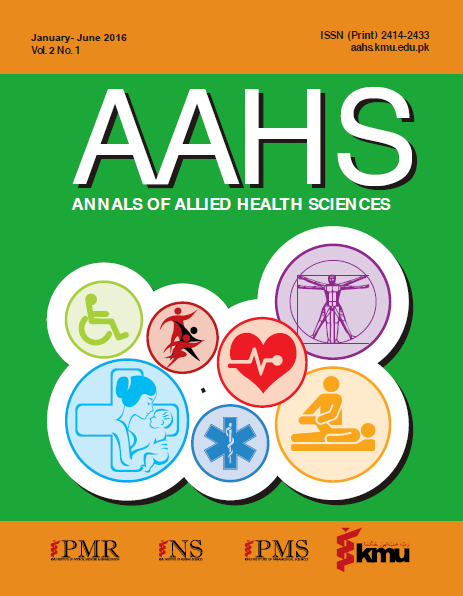FLAWS IN MCQS DESIGNED BY NURSE EDUCATORS AT A NURSING SCHOOL IN PESHAWAR, PAKISTAN
Keywords:
Difficulty index DF1, discrimination index DI, distractor efficiency DE, multiple choice question or item, non-functional distractor (NFD)Abstract
AIM: The overarching aim of this study was to assess the flaws in Multiple Choice Questions (MCQs) designed by nurse educators working at a nursing school in Peshawar, Pakistan.
METHOD: A case study approach was used to analyze 70 MCQs designed by 7 nurse educators at one nursing school of Peshawar, Pakistan.
RESULTS: Out of all 70 items analyzed, mean DF1 was 63.5+ 20%. Total 49(70%) items had “good to excellent” (DIF I between 31 - 60%) and 43 (61.4%) had “good to excellent” DI (> 0.25). Mean DI was 0.197+ 0.27. Poor DI (< 0.20) were noted in 26 items while undesirable negative DI were noted in 6 items showing poor preparation of students and also flaws in constructing these MCQs. Mean DE was 66.2% (139) considered as ideal/ acceptable while 71(33.8%) non-functional distractors (NFD) were noted. 22 (10.5%) of MCQs have a single NFD, 17(8.10%) have two NFDs while 5(2.38%) of the MCQs have three NFDs.
CONCLUSION: The aim of the Study was to emphasize on the construction of quality MCQs which truly assess the knowledge of the students and can differentiate the students of different abilities in correct manner.
Downloads
Published
How to Cite
Issue
Section
License
Open Access This article is licensed under a Creative Commons Attribution-NonCommercial 4.0 International License, which permits any non-commercial use, sharing, adaptation, distribution and reproduction in any medium or format, as long as you give appropriate credit to the original author(s) and the source, provide a link to the Creative Commons licence, and indicate if changes were made. To view a copy of this licence, visit http://creativecommons.org/licenses/by-nc/4.0/.






